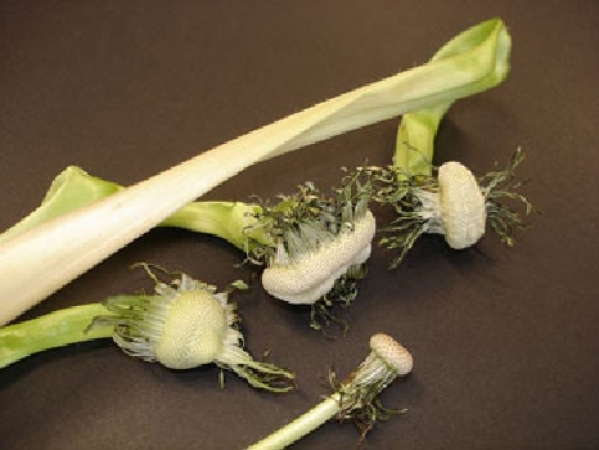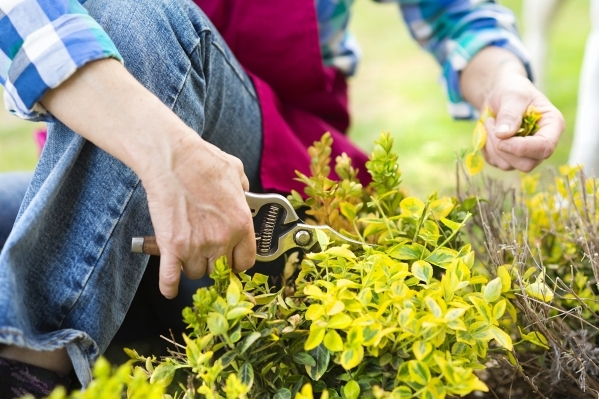A weird shape might not be the end of your plant
Part of a plant, which could be a tree, a flower, a cactus or even a vegetable, might on occasion develop an odd shape, while the rest of the plant appears healthy. The oddly formed part might not look damaged or diseased, exactly, but most certainly not normal. A few years ago, sections of the ash tree in my yard produced a dense flush of normal-looking leaves in one part of the canopy. I was afraid something terrible occurred or that some unpleasant visitor had moved in. When I removed those areas, smaller, younger branches looked as if they had melted into each other, but the tree itself seemed fine.
The name of this odd phenomenon is "fasciation." It is one of the more interesting and strange marvels you can sometimes see with plants. Several slender stems became flattened and fused. These fused, or fasciated, stems cannot function normally; they do grow many leaves but will not produce flowers. In some plants, however, flowers themselves can become fasciated.
In botany, fasciation is an event out of the ordinary, yet it is more common than one might imagine. A 1948 paper from the National Institutes of Health described the genetics of fasciated beefsteak tomatoes. The botanical garden in Phoenix has a big saguaro cactus (the tall columnar type with arms extended) where one arm looks like a pleated crest. In fact, the term for that is "cristation." The saguaro is impressive enough with no curious decoration; this example is astounding.
I looked for interesting photos of fasciation on the Internet and found that many people have taken pictures. While there are similarities among fasciated plants, they have some wild differences. In one picture, the stem of a sweet potato vine, which is regularly round and slender, looked like a broad red ribbon! Obviously it was several stems all fused into a flat strap of tissue. I also saw a picture of a daisy where the yellow center was not round, but quite elongated, surrounded by normal looking white petals. It shows up in lilies and a Japanese willow. You have probably encountered this phenomenon already, especially if you have ever grown celosia, known as "cockscomb." That crested flower is an example of fasciation.
Fasciation does not appear to benefit the plant. There is no obvious survival advantage, but it does not do much harm either. Why would a plant grow a fasciated segment? Is there a reason it would always appear on some plants, like the celosia, but only rarely on others?
When you look at the literature, you find several explanations. The first is genetics. A random mutation could cause a single plant to develop a few fasciated stems, but that would not explain why some plant varieties are always fasciated.
Somewhere along the line, a mutation occurred in the genome of a plant, possibly giving it a tendency to develop fasciation. A plant often eliminates any mutant tissue before it has the chance to interfere with its survival. If it does not need to eliminate the mutation, it will be carried in the seed. As long as the mutation is not lethal, subsequent generations of seeds will contain that new gene, which makes the plant more likely to distort.
Genetics might increase the probability that a plant will develop fasciated tissue, but there are other, more direct and immediate causes. There are many indications that the reasons can be because of microorganisms. Researchers have identified a species of bacteria that causes it in some species, but not all.
Many gardeners have pointed out that fasciated plants had often been afflicted by aphids earlier in the growing season. There are studies at horticulture labs that are looking for a viral cause. Because aphids are a major carrier of plant viruses, they may be one of the predictors for the phenomenon. There may also be a fungal cause.
Herbivory, when an insect or another animal takes a nibble of succulent tissue, might stimulate fasciation, as can drift from herbicides that have not been applied correctly. Perhaps the environment stressed the plant, and it responded by developing fasciated stems. When conditions promote fast growth, it tends to show up more often. It could be that different plants, at different times in their lives, produce flattened, thickened stems or flowers for any number of reasons.
We have selected celosia, and crested cactus, and the fasciated Japanese willow, but these are exceptions. When the phenomenon is the result of an infection, this can be a problem for other, uninfected, plants nearby. As with other plant infections, prune out the problem tissue, wrap it and discard.
If you find a particularly interesting-looking specimen, you could bring it to the Cooperative Extension Master Gardener Help Desk, 8050 Paradise Road. They would be happy to add it to the small fasciation collection already started.
Angela O'Callaghan is the Social Horticulture Specialist for University of Nevada Cooperative Extension. Contact ocallaghana@unce.unr.edu or 702-257-5581.


















